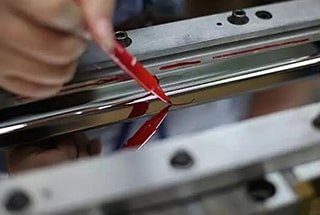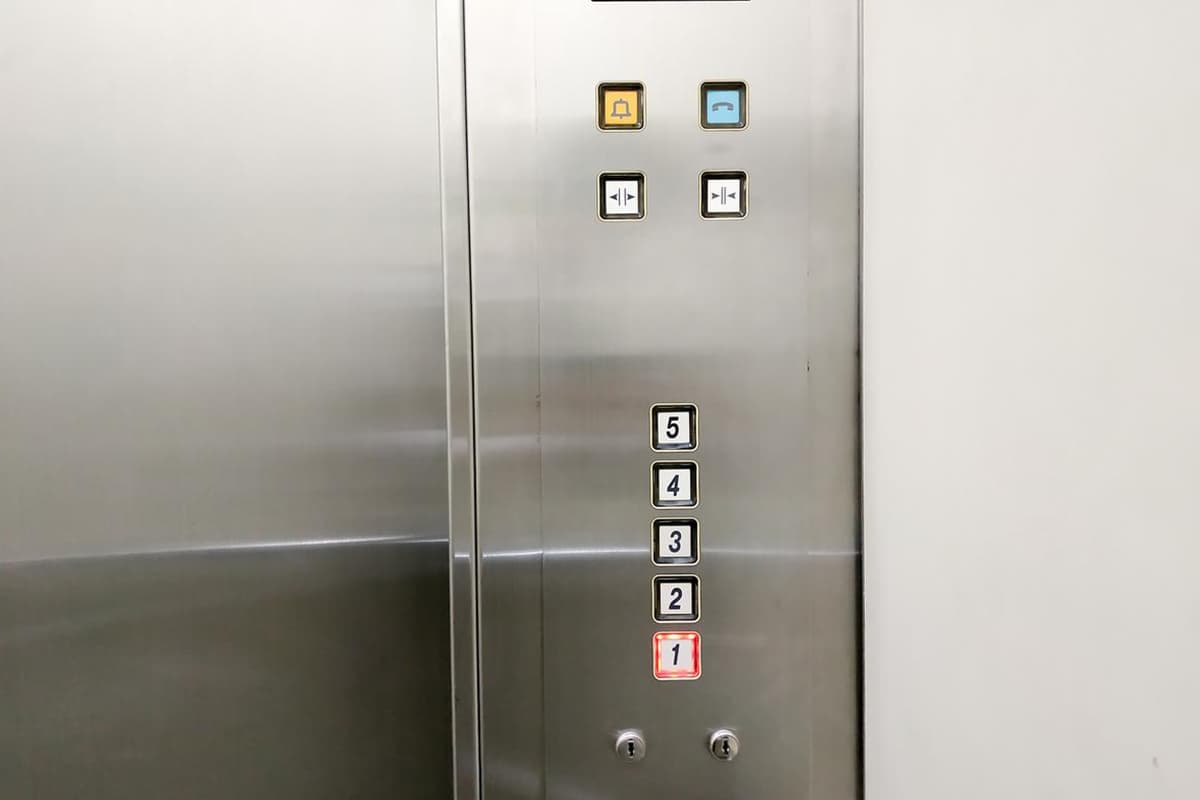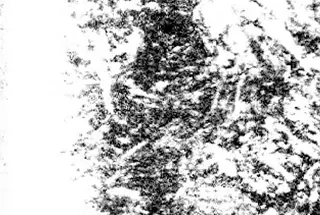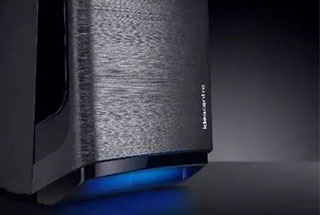
Ever wondered why tiny metal burrs can cause big problems? This article explores the causes and dangers of sharp edges and burrs on sheet metal parts, especially in elevators. From affecting production quality to posing safety hazards, these imperfections need control. Learn about effective measures and technologies to minimize burrs, ensuring smooth, safe, and high-quality metal components. Dive into practical solutions to enhance your manufacturing process and product safety.

During the manufacturing process, sheet metal parts will have varying degrees of sharp edges and burrs. If these exceed a certain limit, they can have negative impacts on various aspects such as production, transportation, quality, performance, appearance, and even cause harm to those using the product.
For example, sharp edges and burrs can affect processing and assembly positioning, causing scratches on the surface coating and leading to paint and rust damage. Additionally, they can cause harm to the hands and other body parts of processors.
As people’s requirements for products continue to improve, the potential harm caused by uncontrolled sharp edges and burrs is attracting increasing attention.

Sharp edges are intersections of planes that occur naturally during processing.
Sheet punching burr is a stage in the separation process that occurs after the material experiences elastic and plastic deformation during blanking or shearing.
As the plunging process begins, cracks appear near the cutting edge of the die.
As the amount of material cut increases, the upper and lower cracks continue to spread into the material.
When the cutting edge clearance is set correctly, the upper and lower cracks overlap, causing the sheet to normally fracture and separate.
If the cutting edge gap is not set correctly, the upper and lower cracks do not align, resulting in punching burrs.
The main causes of burrs in laser cutting sheet metal parts are:
During the laser cutting process, the high energy from the laser beam causes the cutting part of the workpiece to quickly vaporize and evaporate, allowing for the cutting to take place.
To ensure good cutting quality, the residual slag on the surface must be blown off using auxiliary gas. If this step is skipped, burrs will form on the cutting surface once the slag cools down.
In addition, equipment accuracy and processing parameters that are not set correctly can also contribute to burrs formation.
Another important factor in the formation of burrs is the increased micro-connections between the tool and the workpiece, which are a result of the process requirements in punching and shearing.
The sharp edges and burrs generated during sheet metal processing can have a significant impact on both the surface quality and appearance of the final product, as well as pose a safety hazard. To mitigate these effects, it is important to research ways to suppress or reduce burrs to ensure the smooth progress of safe production. This involves finding ways to fundamentally eliminate or minimize the presence of sharp edges and burrs.
Measures to control sharp edges and burrs can be divided into two categories based on processing technology:
The first category involves designing processes to minimize sharp edges and burrs, including controlling the height of burrs within acceptable limits.
In the production of elevator stainless steel sheet metal parts, the product design team considers the mechanisms of burr formation and removal during the design stage to minimize the occurrence of burrs. This can include:
The second category involves deburring technologies, such as the following measures in punching and shearing production:
(1) Selecting a reasonable tool clearance during punching and shearing is a crucial factor in reducing burrs in the final product. The size of the edge gap should be based on the thickness and strength of the material being punched and sheared, and can be determined using reference tables.
Table 1 Numerical reference of initial bilateral gap Z of blanking die
| Thickness | 08,10,35,Q235 | 16Mn | 40,50,1Cr18NiuTi | |||
|---|---|---|---|---|---|---|
| Zmin | Zmax | Zmin | Zmax | Zmin | Zmax | |
| 0.50 | 0.040 | 0.060 | 0.040 | 0.060 | 0.040 | 0.060 |
| 0.70 | 0.064 | 0.092 | 0.064 | 0.092 | 0.064 | 0.092 |
| 0.80 | 0.072 | 0.104 | 0.072 | 0.104 | 0.072 | 0.104 |
| 0.90 | 0.090 | 0.126 | 0.090 | 0.126 | 0.090 | 0.126 |
| 1.00 | 0.100 | 0.140 | 0.100 | 0.140 | 0.100 | 0.140 |
| 1.20 | 0.126 | 0.180 | 0.132 | 0.180 | 0.132 | 0.180 |
| 1.50 | 0.132 | 0.240 | 0.170 | 0.240 | 0.170 | 0.230 |
| 1.75 | 0.220 | 0.320 | 0.220 | 0.320 | 0.220 | 0.320 |
| 2.00 | 0.246 | 0.360 | 0.260 | 0.380 | 0.260 | 0.380 |
| 2.50 | 0.360 | 0.500 | 0.380 | 0.540 | 0.380 | 0.540 |
| 3.00 | 0.460 | 0.640 | 0.480 | 0.660 | 0.480 | 0.660 |
| 3.50 | 0.540 | 0.740 | 0.580 | 0.780 | 0.580 | 0.780 |
(2) The roughness and wear of the cutting edge of the tool during punching and cutting can also contribute to burr formation.
It is important to control the roughness and wear of the cutting edge. If the edge becomes worn or damaged, it will become rounded and the clearance will increase due to side wear, leading to an increase in burrs.
Tools typically go through three stages of wear: initial wear, normal wear, and abnormal wear. Ideally, tools should be replaced before reaching the stage of abnormal wear. However, in many cases, the permissible burr height is reached during normal wear due to product accuracy requirements. At this point, replacement or grinding must be performed.
Regular maintenance and sharpening of the cutting edge of the tools can reduce burrs, reduce the shear force on the machine, and prolong the lifespan of both the machine and the tools.
(3) The appropriate choice of processing tools, equipment, and processing conditions is also important.
The material of the tool should have good wear resistance and high hardness, as the higher the hardness of the cutting edge, the smaller the burr height.
The mold structure should incorporate a high-precision mold guide device to ensure a reasonable gap during punching, thus reducing burrs.
In terms of the accuracy of processing equipment, the higher the static and dynamic accuracy, the lower the likelihood of plate burrs.
Using lubricating oil can reduce friction between the cutting edge of the tool and the material being processed, prevent temperature increases caused by shear deformation, and prevent the material from adhering to the cutting edge of the tool. Therefore, good lubrication conditions can help reduce the occurrence of burrs.
In laser cutting production, the following measures can also be taken to reduce burrs:
(1) Select high-quality, high-purity cutting auxiliary gas.
(2) Choose appropriate cutting parameters such as focus position, laser power, air pressure, feed speed, nozzle distance, etc. to optimize cutting quality and minimize or eliminate burrs.
(3) Adjust the static and dynamic accuracy of the machine to ensure stability.
As for micro-connections between tool contacts and parts in punching and shearing, it is best to avoid their use if possible. If they are used, they should be removed manually or with a machine.
In addition to implementing measures to minimize sharp edges and burrs during the punching and shearing process, for stainless steel sheet metal parts in elevators, different deburring processes are prioritized based on the risk of sharp edges and burrs, divided into high risk, medium risk, and low risk.
These priorities are taken into account when arranging deburring processes after shearing. Some products may need to be deburred before being transferred to further processing, while others can be sent directly to product assembly.
The choice of deburring processes is made with consideration of product quality, production efficiency, and cost, taking into account the economic feasibility.
Currently, although there are many techniques for removing sharp edges and burrs in sheet metal parts, most elevators use mechanical methods for their stainless steel sheet metal parts.
For large to medium-volume parts, such as car walls, hall doors, and car doors, sharp edges and burrs are typically removed through machine grinding before bending. For small-batch, single-piece products that have already been bent and formed, manual deburring methods are used.
Figure 1 depicts a deburring machine located after the punching and shearing center of Salvagnini. It is primarily used for deburring hall doors, car doors, and car walls in mass production without bending.

Fig. 1 Deburring machine arranged after punching and shearing processing center
Figure 2 displays a brush deburring machine located after the laser cutting machine. It is mainly used for medium-sized batches, such as front walls, door heads, and car roofs, to remove burrs from products that have not been bent after laser cutting.

Figure 2 Brush deburring machine arranged behind the laser cutting machine
Figure 3 shows a manual deburring tool. This tool is mainly used for small batches of products that cannot be deburred by machine, such as door heads that have been punched and formed.

Figure 3 Manual Deburring
When selecting a deburring technology, there are numerous factors to consider, including the existing production conditions, the technical proficiency of the workers, and their operating practices.
An appropriate and reasonable deburring process is crucial in enhancing product quality and lowering manufacturing costs, while ensuring that quality is maintained.
The basic principle for choosing a deburring process is to ensure low cost while maintaining quality.
The selection of a deburring process requires careful consideration, as it has a significant impact on the cost of plant and equipment investment, environmental protection, and process equipment.
The formation of sharp edges and burrs on sheet metal parts is a common issue in the punching and shearing process, and while it can be difficult to eliminate it completely, it is possible to minimize it. The reasons and control measures for its formation have been described, and the process for removing sharp edges and burrs from stainless steel sheet metal parts of elevators is also outlined.
Our engineers and technicians always strive to control the hazards of sharp edges and burrs to a minimum while ensuring quality. By choosing the appropriate conditions, control measures, and removal processes, we aim to maximize efficiency and minimize costs.


